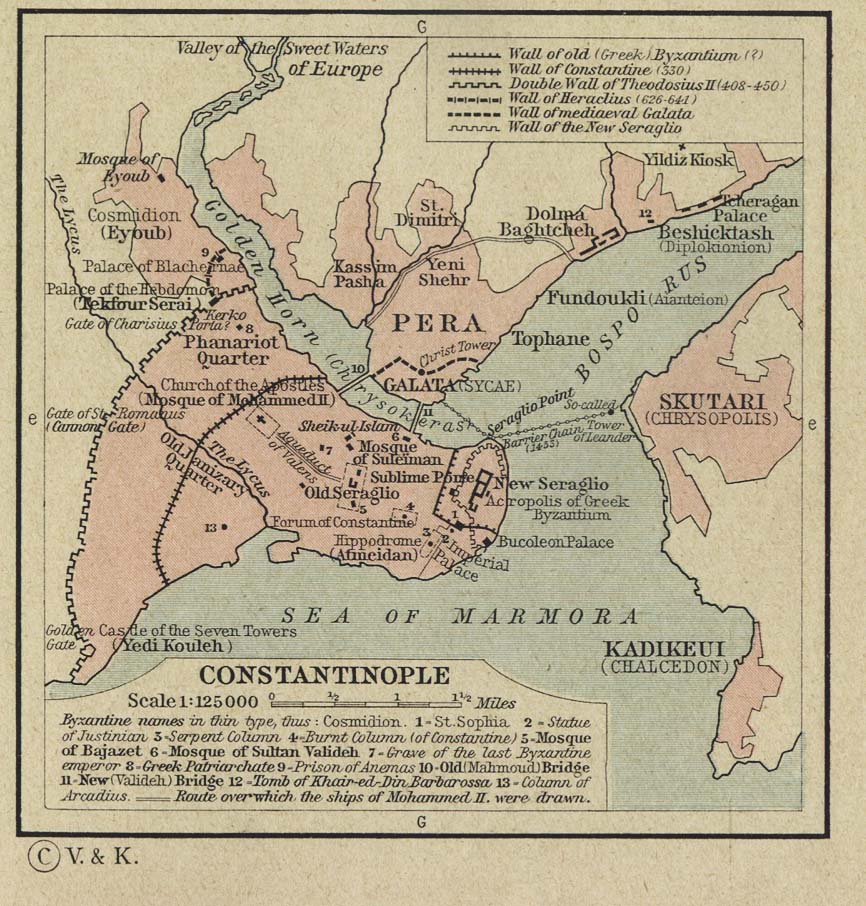Division of empire
| Line 1: | Line 1: | ||
| + | [[Image:constantinople2.jpg]] | ||
| + | |||
General Observations on the Fall of the Roman Empire in the West by Edward Gibbon | General Observations on the Fall of the Roman Empire in the West by Edward Gibbon | ||
Revision as of 03:02, 7 May 2009
General Observations on the Fall of the Roman Empire in the West by Edward Gibbon
"The decay of Rome has been frequently ascribed to the translation of the seat of empire; but this history has already shewn that the powers of government were divided rather than removed. The throne of Constantinople was erected in the East; while the West was still possessed by a series of emperors who held their residence in Italy and claimed their equal inheritance of the legions and provinces. This dangerous novelty impaired the strength, and fomented the vices, of a double reign; the instruments of an oppressive and arbitrary system were multiplied; and a vain emulation of luxury, not of merit, was introduced and supported between the degenerate successors of Theodosius. Extreme distress, which unites the virtue of a free people, embitters the factions of a declining monarchy. The hostile favourites of Arcadius and Honorius betrayed the republic to its common enemies; and the Byzantine court beheld with indifference, perhaps with pleasure, the disgrace of Rome, the misfortunes of Italy, and the loss of the West. Under the succeeding reigns, the alliance of the two empires was restored; but the aid of the Oriental Romans was tardy, doubtful, and ineffectual; and the national schism of the Greeks and Latins was enlarged by the perpetual difference of language and manners, of interest, and even of religion. Yet the salutary event approved in some measure the judgment of Constantine. During a long period of decay, his impregnable city repelled the victorious armies of Barbarians, protected the wealth of Asia, and commanded, both in peace and war, the important straits which connect the Euxine and Mediterranean seas. The foundation of Constantinople more essentially contributed to the preservation of the East than to the ruin of the West."
Rome, Its Rise and Fall By Philip Van Ness Myers 1901
"There was one very distinct line of cleavage which divided the empire into an Eastern and a Western half. We may very properly characterize the empire as Graeco-Roman. Rome had Romanized the West, and a large part of it remains Latin to this day; but she could not Romanize the East. It remained essentially Greek to the last. The building of the new Rome by Constantine on the Bosporus, and the final division of the empire by Theodosius the Great (par. 267), were, viewed from one side, simply formal recognitions of the fact that the two halves of the empire could not be made alike."
